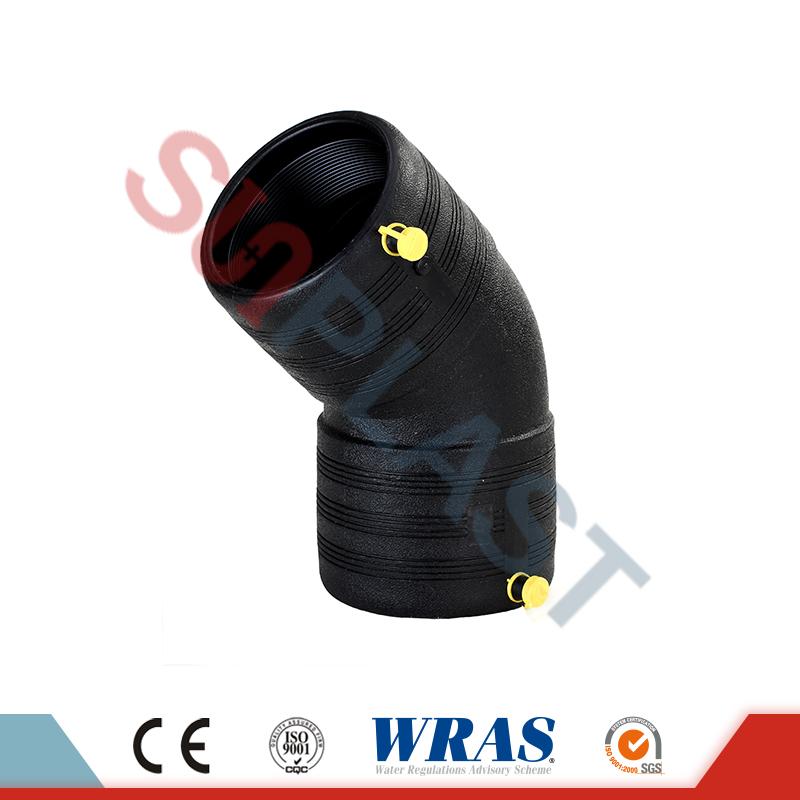
- English
- Español
- Português
- русский
- Français
- 日本語
- Deutsch
- tiếng Việt
- Italiano
- Nederlands
- ภาษาไทย
- Polski
- 한국어
- Svenska
- magyar
- Malay
- বাংলা ভাষার
- Dansk
- Suomi
- हिन्दी
- Pilipino
- Türkçe
- Gaeilge
- العربية
- Indonesia
- Norsk
- تمل
- český
- ελληνικά
- український
- Javanese
- فارسی
- தமிழ்
- తెలుగు
- नेपाली
- Burmese
- български
- ລາວ
- Latine
- Қазақша
- Euskal
- Azərbaycan
- Slovenský jazyk
- Македонски
- Lietuvos
- Eesti Keel
- Română
- Slovenski
- मराठी
- Srpski језик
What Standards Do HDPE Electrofusion Fittings Meet
2025-11-07
As someone who has been in the pipeline industry for over two decades, I’ve seen projects succeed and I’ve seen them fail. More often than not, the difference comes down to one critical factor that’s often overlooked: the standards that the components meet. When my team specifies HDPE Electrofusion Fittings, the first question we ask isn’t about price. It’s about certification. Knowing exactly what standards a fitting conforms to is the simplest way to de-risk a project. It’s our assurance of safety, performance, and long-term value. In this article, I want to pull back the curtain on the key international standards that truly matter for HDPE Electrofusion Fittings and explain why you should never compromise on them. This is precisely where our philosophy at SUNPLAST was born—from a commitment to not just meet but exceed these rigorous benchmarks.
Why Should You Care About Manufacturing Standards Anyway
I can already hear some of you thinking, "These standards just sound like bureaucratic red tape." I used to wonder the same thing early in my career. But let me tell you a story from one of our first major projects. A client was using uncertified fittings from a low-cost supplier to save money. During a pressure test, a coupling failed catastrophically, not only causing costly delays but also raising serious safety concerns. That single failure cost them ten times what they had "saved" on materials. This is what standards are for. They are not just pieces of paper; they are a set of proven, rigorously tested rules that ensure every single HDPE Electrofusion Fittings product will perform as expected under specific conditions. They guarantee that the material is correct, the dimensions are precise, and the joint it creates is structurally sound and leak-free. When you choose a SUNPLAST fitting, you are choosing a product that has been through this fire of testing so your project doesn’t have to.
What Are the Key International Standards for HDPE Electrofusion Fittings
The world of standards can seem complex, but for HDPE Electrofusion Fittings, a few are non-negotiable. These are the ones we focus on at SUNPLAST, and they form the bedrock of our quality assurance.
-
ISO 4437: For Gas Distribution Systems - This is arguably one of the most critical standards. It specifies the requirements for polyethylene piping systems used for the supply of gaseous fuels. If your project involves gas, you cannot afford to use fittings that do not comply with this standard. It involves intense tests for stress crack resistance and long-term hydrostatic strength.
-
ISO 4427: For Water and Drainage Applications - This is the go-to standard for systems conveying water for human consumption, including irrigation and drainage. It covers aspects like material quality, dimensions, and performance under constant pressure.
-
ASTM F1055: The Standard for Electrofusion Type - This ASTM standard specifically covers polyethylene electrofusion fittings. It outlines the requirements for the fittings themselves, including dimensions, marking, and the necessary performance tests for pressure capacity.
Here is a quick overview of what these core standards typically validate
| Standard | Primary Application | Key Parameters Verified |
|---|---|---|
| ISO 4437 | Gas Distribution | Long-term Hydrostatic Strength (LTHS), Resistance to Rapid Crack Propagation (RCP), Slow Crack Growth (SCG) Resistance |
| ISO 4427 | Potable Water & Drainage | Hydrostatic Pressure Strength, Material PE100/PE100RC Grade, Dimensions and Tolerance |
| ASTM F1055 | General Electrofusion Use | Pressure Rating, Sustained Pressure Test Performance, Heater Element Configuration |
How Do These Standards Translate into Real-World Product Parameters
So, what does this mean when you’re holding a SUNPLAST HDPE Electrofusion Fittings in your hand? It means that the abstract standards translate into concrete, measurable features that give you peace of mind. Let’s break down the key parameters you should be looking for on your supplier’s data sheet.
-
Material Grade
-
Our fittings are manufactured from 100% virgin PE100 or PE100RC compound. The RC (Resistance to Crack) grade is particularly crucial for applications with potential for point loads or ground movement, offering superior resistance to slow crack growth.
-
-
Pressure Rating (PN)
-
We produce HDPE Electrofusion Fittings in standard Pressure Nominal (PN) ratings such as PN10, PN16, and PN20, ensuring they can be seamlessly integrated into your designed system pressure.
-
-
Controlled Dimensions
-
Every fitting is manufactured with precise inner and outer diameters, as well as a clearly marked fusion zone. This precision is vital for achieving a perfect, interference-fit with the pipe, which is the foundation of a strong, leak-free joint.
-
Can You Achieve a Flawless Joint Every Time with Certified Fittings
Having certified fittings is half the battle won. The other half is proper installation. The great thing about using standards-compliant products from a brand like SUNPLAST is that the installation process becomes predictable and reliable. These standards ensure that the heating element is correctly embedded, the melt flow indicators work as intended, and the fusion time and cooling parameters provided in our technical manuals are accurate. When you follow the correct procedure with a certified fitting, a perfect joint is not a matter of chance; it's a matter of science. This reliability eliminates costly redos and ensures the long-term integrity of your entire pipeline network.
Are You Ready to Build with Confidence
In our line of work, there is no room for guesswork. The integrity of a pipeline affects everything from public safety to operational budgets. Choosing HDPE Electrofusion Fittings that are backed by rigorous international standards is the most straightforward decision you can make to protect your investment. It’s a decision that pays for itself over the 100-year design life of a well-built HDPE system. Don't just take my word for it; ask your supplier for the test certificates. Scrutinize the data sheets. Your project deserves that level of diligence.
We at SUNPLAST are proud to stand behind our products with full transparency and documented compliance. If you are working on a project that cannot afford compromises, we invite you to contact us directly. Let our technical team provide you with the certification documents and data sheets you need to specify with absolute confidence. Reach out for a quote or to discuss your specific application requirements today.





